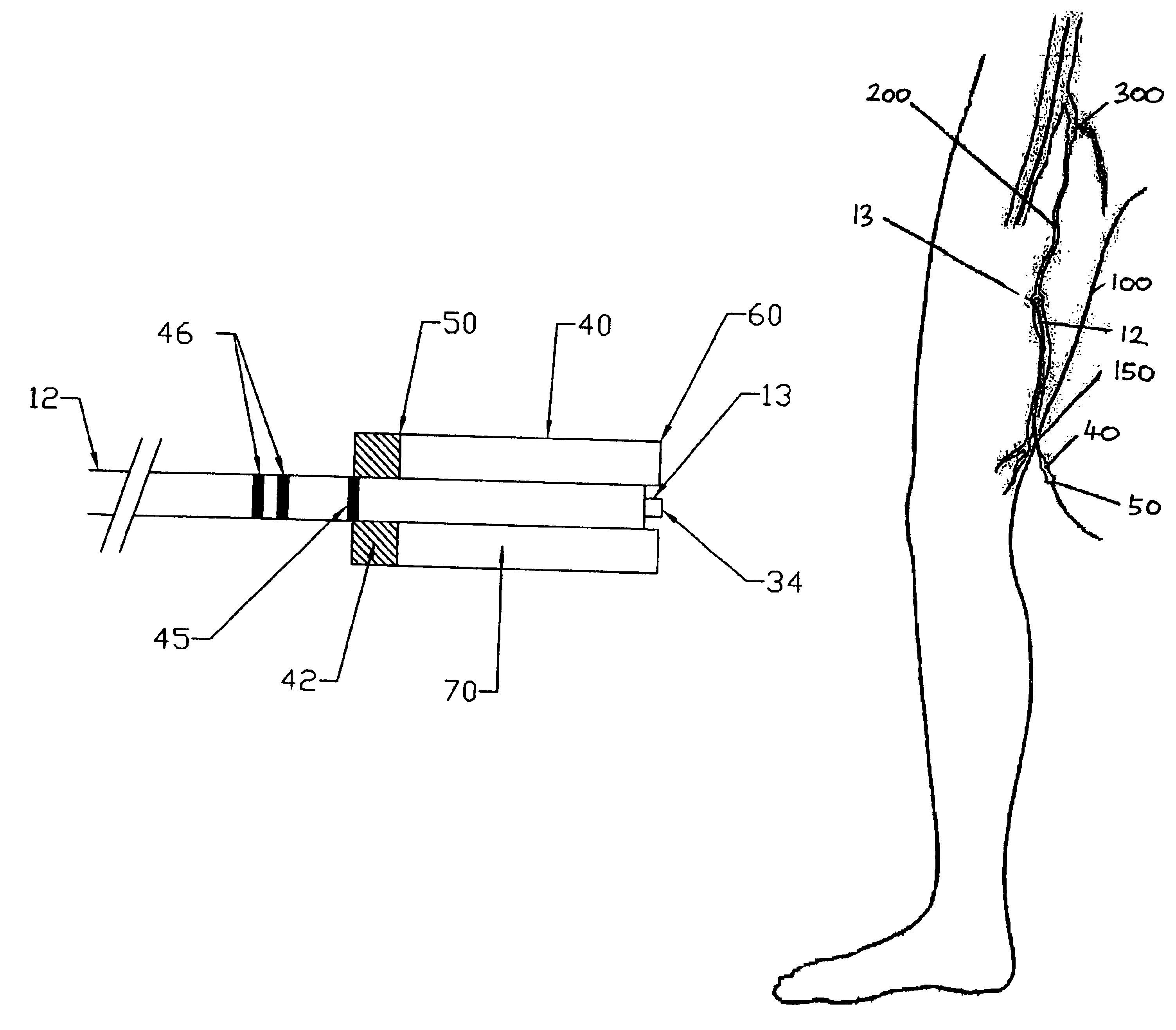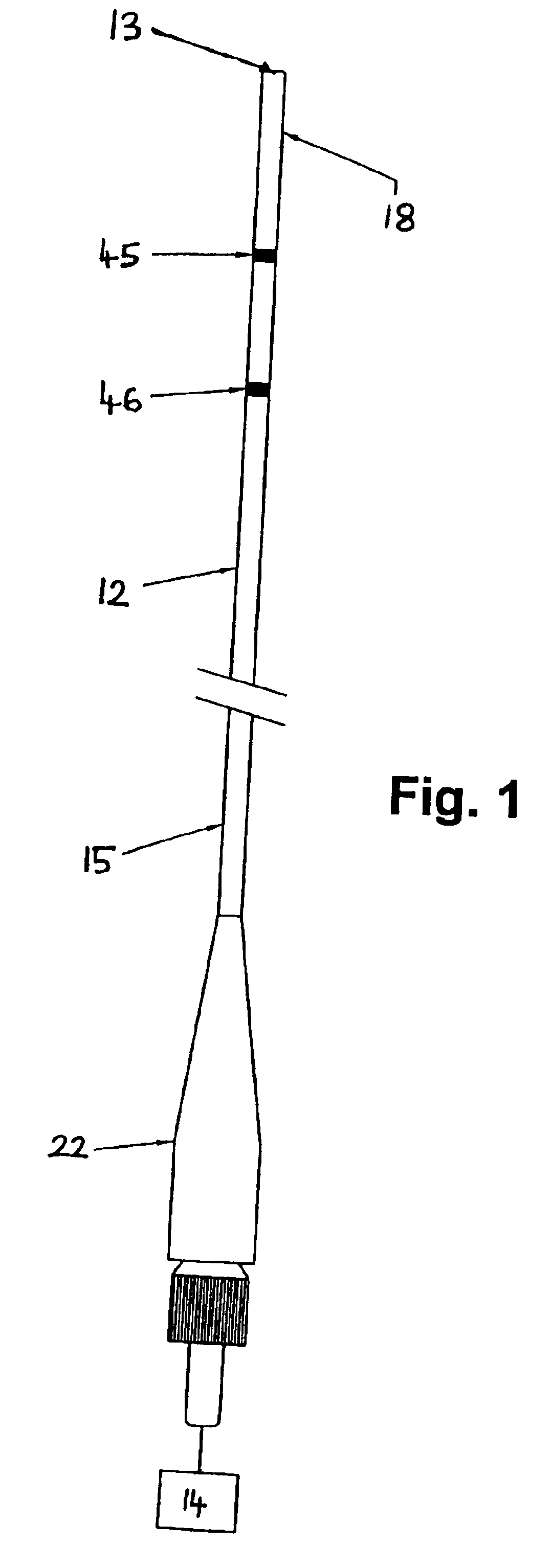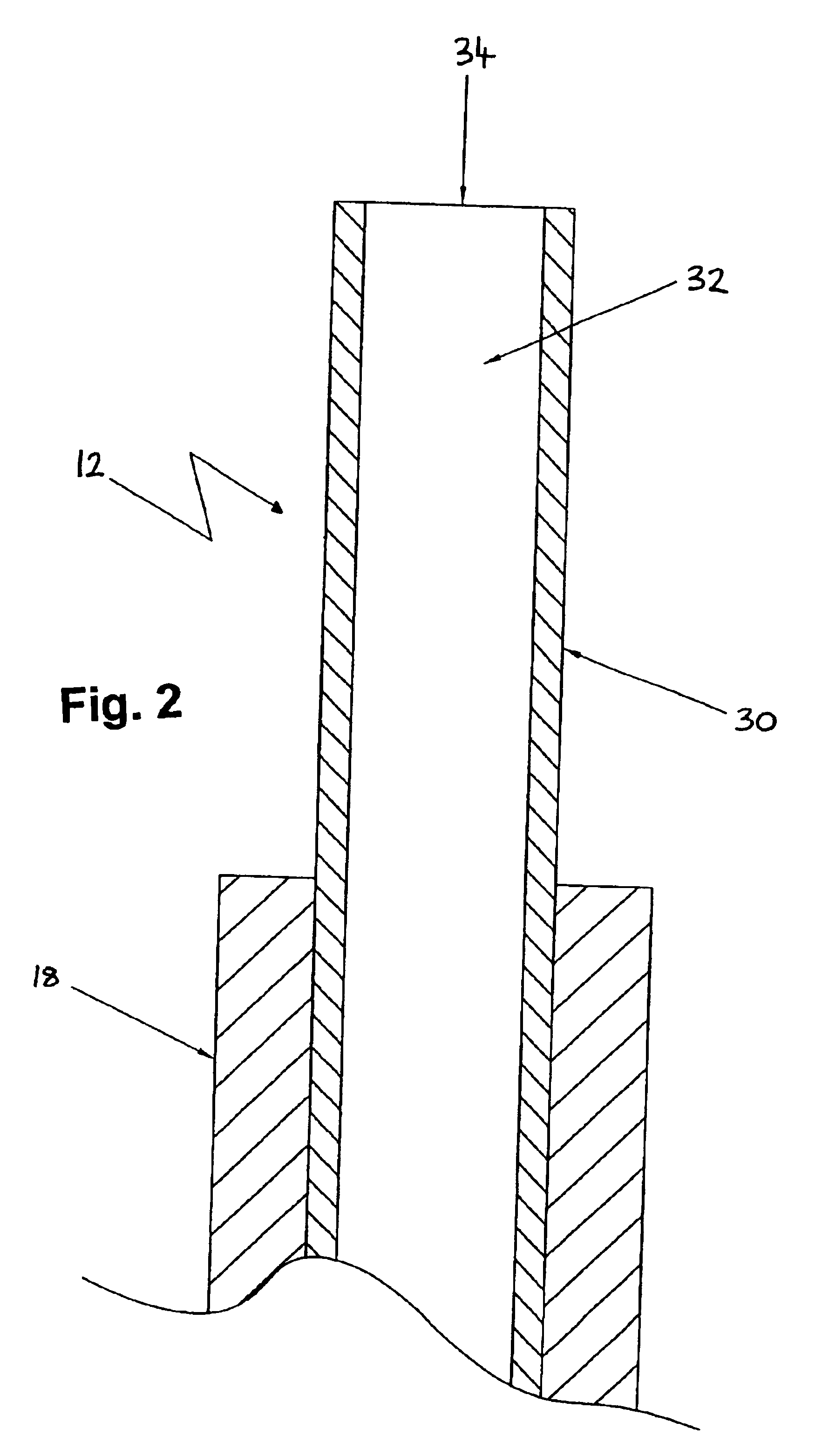Method of endovenous laser treatment
a laser treatment and endovenous technology, applied in the field of endovenous laser treatment, can solve the problems of unsatisfactory methods, unsuitable inserting of optical fiber directly into body tissue, and so as to minimize the length of optical fiber remaining, prevent thermal damage to the introducer sheath, and facilitate the effect of marking
- Summary
- Abstract
- Description
- Claims
- Application Information
AI Technical Summary
Benefits of technology
Problems solved by technology
Method used
Image
Examples
Embodiment Construction
[0053]With reference to FIGS. 1 and 2, an optical fiber 12 having a distal end 13 and a proximal and 15 is shown which is coupled to a laser energy source 14 via a connector 22. According to one embodiment the optical fiber 12 has a length of 3.5 m±0.1 m and is preferably provided with a protective buffer layer 18. One or mare markings or other form of indicator 45, 46 are arranged on the optical fiber 12 at a predetermined distance from distal end 13. Preferably, the markings 45, 46 are provided around substantially the whole circumference of the protective buffer layer 18 of the optical fiber 12. According to the preferred embodiment, the laser energy source 14 is an 810 nm diode laser manufactured by DIOMED, Ltd., United Kingdom. The connector 22 may be any suitable connector / fiber terminator such as a standard sub-miniature A (SMA) connector (as shown) or other proprietary connector.
[0054]The distal end 13 of the optical fiber 12 is shown in more detail in FIG. 2. The optical fi...
PUM
 Login to View More
Login to View More Abstract
Description
Claims
Application Information
 Login to View More
Login to View More - R&D
- Intellectual Property
- Life Sciences
- Materials
- Tech Scout
- Unparalleled Data Quality
- Higher Quality Content
- 60% Fewer Hallucinations
Browse by: Latest US Patents, China's latest patents, Technical Efficacy Thesaurus, Application Domain, Technology Topic, Popular Technical Reports.
© 2025 PatSnap. All rights reserved.Legal|Privacy policy|Modern Slavery Act Transparency Statement|Sitemap|About US| Contact US: help@patsnap.com



